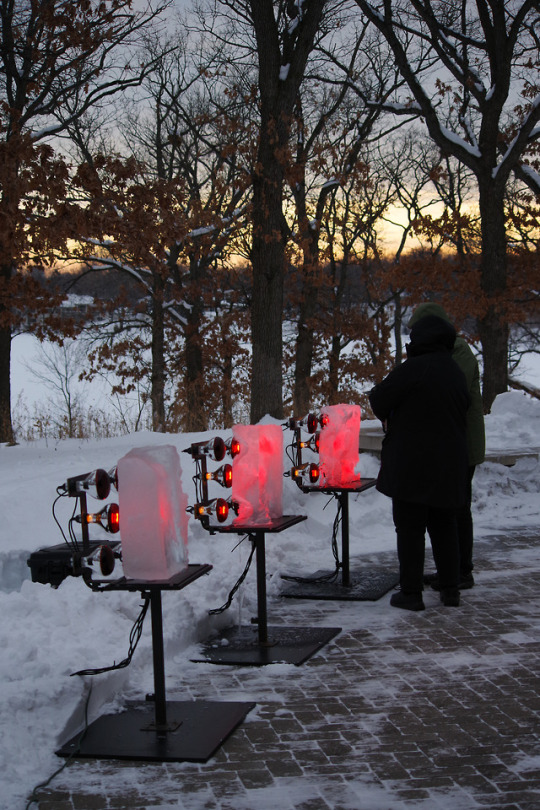Video
vimeo
The Shape of a Practice
HKW
2020, Oct 26, Mon — 2020, Nov 30, Mon
I was involved in organizing elements of this seminar, including an exhibition based around our work on and about the Mississippi River, entitled The Current.
The Anthropocene is often perceived as either a planetary-scale concept or an extremely local concern. Yet neither of these accounts considers that the global and the local are deeply interconnected. So how can diverse local research, struggles and practices be related to one another in order to establish a mutual ground of experience and for action within the geological age of humans?
Over the course of a week, The Shape of a Practice brings together over 100 researchers, scientists, artists and activists to share their fields and methods of work on everything from water pollution and disaster management to an interrogation of the new geological era’s colonial histories. In an interactive virtual environment, specifically designed for the event, as well as on-site at HKW, distinct questions, strategies and forms of action will be linked to form a topology of the Anthropocene.
0 notes
Photo
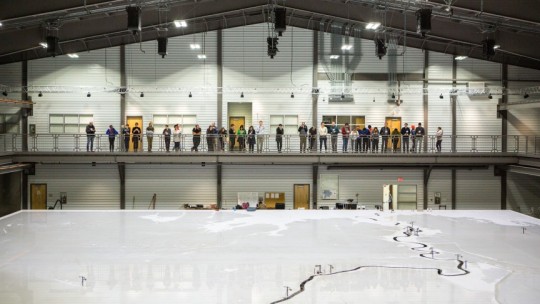
The Current
On display at HKW
2020, Mon, Oct 26 — 2020, Sun, Nov 01 (early closure because of Covid-19)
The current exacerbation of social, ecological and political lines of conflict in the United States reveal conflicts that have been concentrating around the Mississippi for some time. As tensions rise around racialized violence, ecological destruction and the Covid-19 pandemic, the historical path dependencies and social-political structures that made them become ever more apparent.
The installation The Current presents field studies by artists, scholars and activists who were involved in the HKW project Mississippi. An Anthropocene River and which sought site-specific approaches to planetary crises along the Mississippi River Basin; a river system that exemplifies current transformations of intertwining histories of earth and settlement, of the bio- and technosphere. The Current presents interdisciplinary research, methodological experiments and works of art that explore the ecological, political, social and technospheric interconnections of the Mississippi River. In the face of the deepening of old and new social divisions, the installation brings together projects that explore new perspectives and spheres of engagement based on solidarity and collaboration for a polyphonic practice of working, living, and surviving in the Anthropocene.
Due to the new COVID-19 regulations the contents of the installation are available online only at shape.anthropocene-curriculum.org.
With contributions by Kayla Anderson, Sara Black, Jeremy Bolen, Isabelle Carbonell, Andrea Carlson, Jennifer Colten, Tia-Simone Gardner, Beate Geissler, Amber Ginsberg, Ryan Griffis, Monica Moses Haller, Derek Hoeferlin, Brian Holmes, Sarah Kanouse , John Kim, Brian Krikbride, Sarah Lewison, LocalStyle (Marlena Novak and Jay Alan Yim), Saundi McClain-Kloeckener, Margarida Mendes, Abbéy Odunlami, Lynn Peemoeller, Claire Pentecost , Oliver Sann, Jenny Schmid, Michael Swierz, Joe Underhill, Monique Verdin, Anna Van Voorhis, Maureen Walrath, Joslyn Willauer, Andrew S. Yang
1 note
·
View note
Photo

I thought this essay helpful to revisit, given our current Zoom-state.
(Written about CAA’s project for Northern Lights AOV6.)
Read the publication.
The Center for Advanced Application’s (CAA) newest product, Infinity, makes visual reference to a class of animated icons that user interface developers refer to as activity progress indicators. These icons not only include the much maligned spinning wheel (suggested by Infinity), but also the feared beach ball of death, the hated marble of doom, the detested spinning watch, and others.
When my computer displays a progress indicator, I think back to the time I spent programming a virtual color pinwheel for the holistic health guru, Andrew Weil. Visually, a pinwheel is nearly identical to a spinning beach ball, except for the intentional blurring of colors which gives the beach ball an illusion of faster movement. New Agers use a physical version of the pinwheel as a device for meditation. When spun at seven rotations a second, the individual colors converge to create white light. As a spiritual metaphor, it speaks to the human condition, perpetually awaiting transfiguration in a supernova of light.
The Macintosh’s spinning beach ball, however, doesn’t rotate quickly enough, and when my computer freezes up, I focus my surplus energy onto the icon and fantasize that I can accelerate it to 7 hertz and make it disappear.
Determinate and indeterminate progress indicators
Progress indicators are used in situations in which a user has to wait for a computational process. There are two classes: determinate and indeterminate. Determinate indicators, often represented by an animated bar, provide a visual representation of how long a process has been running so that users can infer the remaining wait time. (But as everyone knows determinate indicators are poorly designed and processes often take longer than what is represented.) Though they bespeak a pure wasting of time, which — in a culture such as ours that demands constant productivity — is attended with anxiety, determinate indicators offer reassurances. They encourage us to be patient; they transform waiting into expectation, precisely because they make time comprehensible. They fit within the coordinates of the everyday, as there are numerous real world analogs to determinate processes: the growing belly of a pregnant woman is an indication of birth; a queue suggests the time to service; the countdown at crosswalks; etc.
Infinity references indeterminate indicators, colloquially known as throbbers. Despite being a subclass of progress indicators, throbbers in no way measure progress. They are used in situations in which the duration of a task cannot be determined and foretell a wait in which the length of time is unknown. In contrast to determinate indicators, real world analogs of indeterminate waiting are less obvious and less common. Beckett’s Waiting for Godot provides an existential example: Vladimir and Estragon, the protagonists of the play, endlessly await Godot’s arrival. (One yearns for a progress bar that could display how much time is left in their wait.) Death, of course, is a subtext of Beckett’s play, and death underlies all forms of indeterminate waiting. Given the exigencies of existence, we do not have a progress indicator to tell us how much time we have remaining. Whoever first referred to the throbber as a beach ball of death then was clearly struck by the cruel irony of such indicators. Fortunately, throbbers do not foretell the imminence of one’s earthly demise, but as a symbol of the indeterminateness of time, Infinity evokes the horizon of one’s existence and thus the proximity of death.
In his book, 24/7, critical media theorist Jonathan Crary writes cogently about the impoverishment of communities with the advent of media technologies that enable non-stop communication and work. Despite a proliferation of ways to connect with others virtually, social media evacuate a sense of being-in-common with others that is required for the strengthening of human community. Referring to Sartre’s concept of seriality, Crary writes that digital media have resulted in “the dispersal of collectivity into an aggregate of discrete individuals who relate to each other only on the basis of hollow or narcissistic identities” (24/7, 116). This atomization is in evidence in the temporal suspensions produced by electronic media discussed here. In determinate situations one is often accompanied or surrounded by others as when one is in a line. (Inhabitants of former Eastern Bloc countries learned that human community can even form around the solidarity in waiting.) In indeterminate situations, by contrast, one is strikingly alone: Vladimir and Estragon might have each other, but their experience is solitary. When one waits in anxious anticipation for an activity indicator to disappear, one is utterly alone.
The light of a black hole
The recurring motif of time travel, temporal dislocation, and waiting in recent Hollywood movies are symptomatic of this isolation that attends our electronic condition. In Christopher Nolan’s retelling of Kubrick’s 2001, Interstellar, a black hole is envisioned as a spinning ball of fiery white light. In the movie’s concluding scenes, Cooper is found floating in space and brought back to Earth. How many decades had passed before he returned to the human community from which he was separated? Finding it impossible to reintegrate into a world that’s left him behind temporally, with only an obsolete talking box to keep him company, Cooper steals a spaceship and takes off for the blackness of outerspace. In predictable Hollywood fashion, the implication is that his love interest might still be waiting for him through the black hole. But isn’t the more challenging interpretation that when faced with the shattering loneliness and isolation of being reft from time and place, Cooper flees from the human world that is not his own for the nothingness of space, for death.
And isn’t this our condition as well? We live in solitude and disconnection from others. We are drawn in fascination to spinning indicators of endless time only to recoil at the real conditions of our existence.

1 note
·
View note
Photo
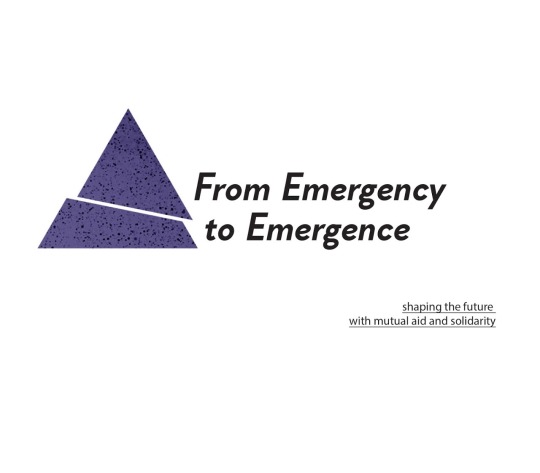
www.emergencecommunity.org
A series of public conversations on the topic of mutual aid and solidarity in response to crises at the intersection of racial inequality, the Covid pandemic and climate change with a focus on recent events in the Twin Cities. Potential case studies and respondents include the Twin Cities Uprising, Hurricane Katrina, insurgent Municipalist movements along the Mississippi River (including Cooperation Jackson, Carbondale Spring, Cooperation Northfield), historic flooding along the Upper Mississippi River, the BP Oil Disaster, Another Gulf is Possible, BIPOC-led food sovereignty movements, the American Indian Movement, the Water Leaders Institute, Workers’ Defense Alliance, Maypop Herb Shop, Southside Harm Reduction, Common Ground Relief (Nola) and Stop Line 3.
The framing questions for these exchanges are:
> How is mutual aid and solidarity a response to the US government’s failures to respond to today’s social and environmental catastrophes, including deep structural racial inequality, environmental conditions associated with the Anthropocene, environmental inequalities, the growth of authoritarianism.
> How does mutual aid and solidarity offer new models and modes of self-governance and political autonomy necessitated by these crises.
> What can the Twin Cities learn from mutual aid, especially in conversation with organizers from other cities who have also experienced it?
Possible topics:
> Community / neighborhood / self-defense
> Health and harm reduction
> Arts and activism
> Food sovereignty
> Community education
> Municipalism
(Please note: this is a program in solidarity with Confluence Studio.)
0 notes
Text
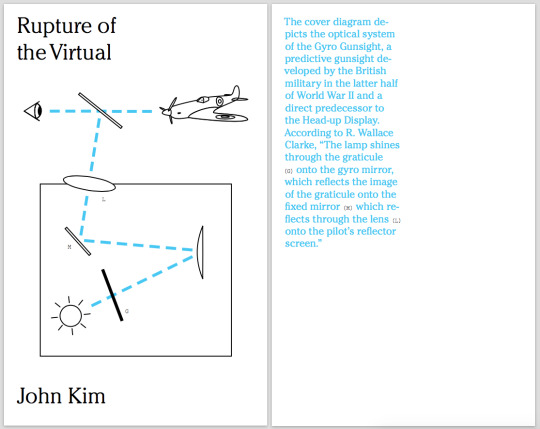
Rupture of the Virtual
John Kim
Rupture of the Virtual is an examination of a concept of the material and the invaluable resources it offers for critical thinking today. In a multifaceted analysis, the book considers the theoretical reasons for the material’s exclusion from media theory and details the military origins of computing interface technologies, such as the Head-up Display and Augmented Reality, that enhance knowledge over the material. Rupture of the Virtual insists that a renewal of the material can be central to a critique of the virtual as a cultural condition.
ORDER a book.
DOWNLOAD the interactive PDF.
Table of Contents
1 Introduction
2 A New Materialism for New Media Studies 19
3 The Origin of the See-Through Graphical Interface 43
4 Encounters with the Material: Krzysztof Wodiczko and Site-Specific Media Art 69
5 Materiality in Site Responsive Media Art 95
6 Rupture of the Virtual 121
7 Conclusion 145
Notes 153
Index 167
Keywords: new media theory, augmented reality, head-up display, virtual reality, mixed reality, military, computing history, military history, graphical user interface, GUI, see-through graphical interface, stgi, art, aesthetic, critical theory, gyro gunsight, site specific, site responsive
http://www.johnwkim.name/rupture
0 notes
Photo

A model of a barge for the Mississippi River Barge project. Very thankful for Molly Reichert’s design studio class at Dunwoody College for taking on this challenge.
0 notes
Photo
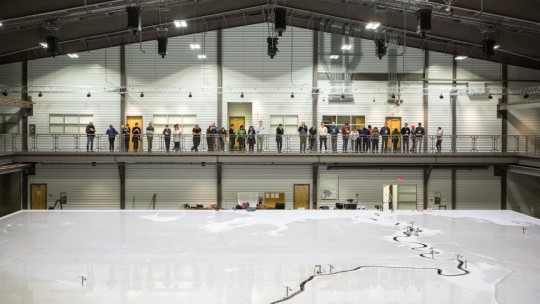
The Current
On display at HKW
2020, Mon, Oct 26 — 2020, Sun, Nov 01 (early closure because of Covid-19)
The current exacerbation of social, ecological and political lines of conflict in the United States reveal conflicts that have been concentrating around the Mississippi for some time. As tensions rise around racialized violence, ecological destruction and the Covid-19 pandemic, the historical path dependencies and social-political structures that made them become ever more apparent.
The installation The Current presents field studies by artists, scholars and activists who were involved in the HKW project Mississippi. An Anthropocene River and which sought site-specific approaches to planetary crises along the Mississippi River Basin; a river system that exemplifies current transformations of intertwining histories of earth and settlement, of the bio- and technosphere. The Current presents interdisciplinary research, methodological experiments and works of art that explore the ecological, political, social and technospheric interconnections of the Mississippi River. In the face of the deepening of old and new social divisions, the installation brings together projects that explore new perspectives and spheres of engagement based on solidarity and collaboration for a polyphonic practice of working, living, and surviving in the Anthropocene.
Due to the new COVID-19 regulations the contents of the installation are available online only at shape.anthropocene-curriculum.org.
With contributions by Kayla Anderson, Sara Black, Jeremy Bolen, Isabelle Carbonell, Andrea Carlson, Jennifer Colten, Tia-Simone Gardner, Beate Geissler, Amber Ginsberg, Ryan Griffis, Monica Moses Haller, Derek Hoeferlin, Brian Holmes, Sarah Kanouse , John Kim, Brian Krikbride, Sarah Lewison, LocalStyle (Marlena Novak and Jay Alan Yim), Saundi McClain-Kloeckener, Margarida Mendes, Abbéy Odunlami, Lynn Peemoeller, Claire Pentecost , Oliver Sann, Jenny Schmid, Michael Swierz, Joe Underhill, Monique Verdin, Anna Van Voorhis, Maureen Walrath, Joslyn Willauer, Andrew S. Yang
0 notes
Text
AN AESTHETICS OF DISPLACEMENT
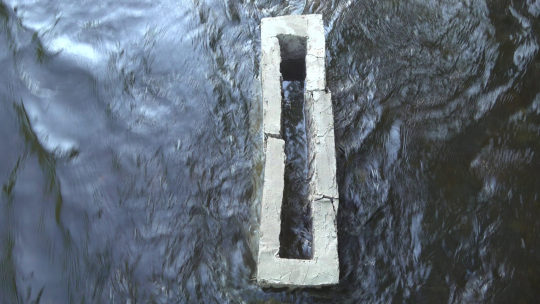
(Written as an introduction to the Anthropocene Film Residency. Read more about the project on the Anthropocene Curriculum website.)
1
Looking down on St. Anthony Falls from the walls of the lock and dam infrastructure, one can marvel at this feat of technical engineering. The river runs over an artificial concrete platform creating the Falls. The lock with its giant metal gates holds back millions of gallons of water. It is a triumph of modern engineering and architecture, built for commercial river traffic in pursuit of profit and progress.
The lock is now closed; its gates welded shut. Today, when standing atop the lock and dam, one cannot help but reflect critically on its existence as a monument to a different time, a pre-climate change past. During a spring season that has witnessed extensive flooding up and down the Mississippi River, one cannot help but worry about its inadequacy and anticipate failure.
2
In its current obsolescence, the aged lock and dam infrastructure is a monument to a dark history. Built into its hard structures is the historical legacy of a technic for the displacement of material, non-humans, and human communities. Its presence speaks to the violence of forced movement and dislocation. In a material sense, a dam is engineered to displace water, to hold it back and redirect its flow. The concrete walls and embankments are fortified barriers for keeping nature at bay. The dam is a military technology as well. It shares a history with the berm, which acts as a human breakwater, a defensive technology for the displacement and separation of groups of people.
3
Over the past six months, four artists have developed new short films inspired by our field station’s approach to Mississippi. An Anthropocene River. They were selected because of pre-existing practices that involved a critical envisioning of the Mississippi River and/or an assessment of the environmental impacts of human activities on bodies of water. A common theme in the artists’ work is an aesthetics of displacement. Andrea Carlson’s site-specific short film, The Uncompromising Hand (2017), revisits Spirit Island, a sacred site to multiple Indigenous communities that was once in the Mississippi River near the current lock and dam. Tia-Simone Gardner’s Reading the River: Yemaya and Oshun (2018) is an experimental documentary set in port cities along the Lower Mississippi River and reflects on Blackness in relation to geography, architecture, and a feminist practice of unsettling how we think and know place. Jenny Schmid’s prints, including The Last Tree Huggers (2017) and Momento Mare (2017) feature monstrous creatures who make an uneasy home in the environmental ruin of a disastrous present. John Kim’s piece, Dam, Lock, Groyne: The Temporal Architecture of the Mississippi River (2019) is a reflection on the hard structures and earthworks found along the entire length of the Mississippi River that displace water, people, and non-human species. Each artist introduces their new work in the pages that follow.
Read more about the project on the Anthropocene Curriculum website.
0 notes
Text
vimeo
Instagram story of the first half of the Anthropocene Curriculum. From @anthroriver
0 notes
Photo
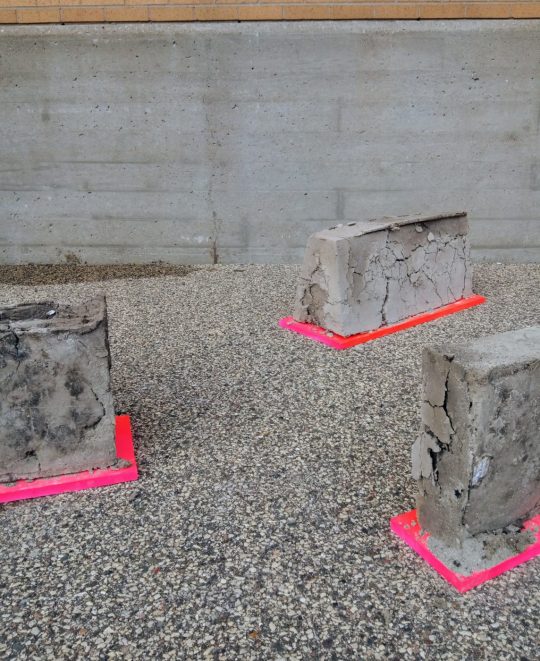
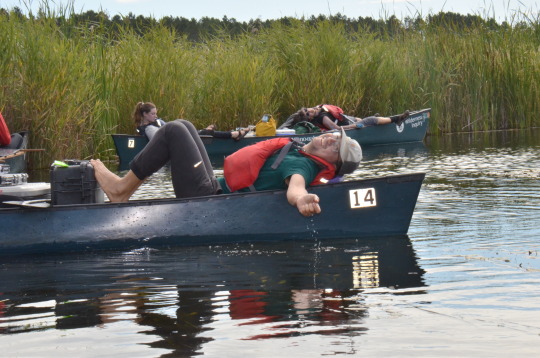
November 23, 2019 - It’s a wrap. A three month long canoe paddle down the Mississippi River from headwaters to the Gulf to research its anthropogenic history.
https://anthropocene-curriculum.org/project/mississippi/anthropocene-river-journey
Mississippi. An Anthropocene River makes the iconic landscape of the Mississippi River Valley legible as a critical zone of habitation and long-term interaction between humans and the environment. The project is a collaborative learning experiment to understand the river as a composite and storied space—emblematic in the way it grounds the global transition into the Anthropocene, the geological epoch of humankind. Through transdisciplinary field explorations and the production of locally situated conversations, the project contours the complex way in which histories, ecologies, technologies, and worldviews collate and collide to shape an entire river system.
(Canoe photo by Joachim Mueller)
0 notes
Photo

https://github.com/jkim5/miss-canoe
The Anthropocene highlights limitations in existing frameworks for data collection and analysis with the suggestion that researchers have run up against the limits of the knowable. This has been revealed in a number of ways: an inadequacy in existing techniques to analyze a changing and uncertain future, challenges to the way in which researchers frame human activities relative to environmental transformation, and the politics that inform what questions can be asked. How are artists and researchers associated with Mississippi. An Anthropocene River project engaged in explorations of the limits of the knowable, and what role does the concept of the Anthropocene have in prompting such questioning? This data sensing device was developed in collaboration with the Mississippi. An Anthropocene River project and Mississippi Studies.
Project website: https://anthropocene-curriculum.org/project/mississippi/anthropocene-river-journey/travelers-wt/data-sensing
Github respository: https://github.com/jkim5/miss-canoe
Data sensing CSV archive: http://www.mediaculturalstudies.com/miss-canoe/
0 notes
Photo

Research website for ongoing work on the Mississippi. An Anthropocene River. project. It provides tools for documenting and archiving our research on the project.
https://anthropocene-curriculum.org/
0 notes
Video
vimeo
Video documentation of Phase 2: http://www.futures-north.com/projects/phase-2/
0 notes
Text
Futures North Selected for New Public Art Commission in Minneapolis
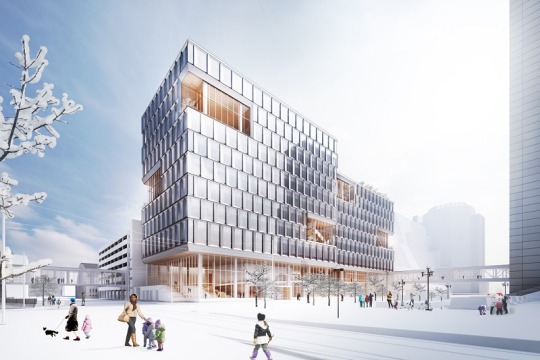
Futures North has been selected in a national RFP process for a new public art commission in Minneapolis: an artistic glass pattern for the city’s New Public Service Building. The building, currently under construction adjacent to City Hall Plaza, is designed by the team of MSR and Henning Larsen and is being constructed by M.A. Mortenson. Futures North is working on bird-safe glass artwork for two locations in the building: the 10th floor staff lounge and the 2nd floor Skyway level. Stay tuned for updates as these projects progress!
2 notes
·
View notes
Photo
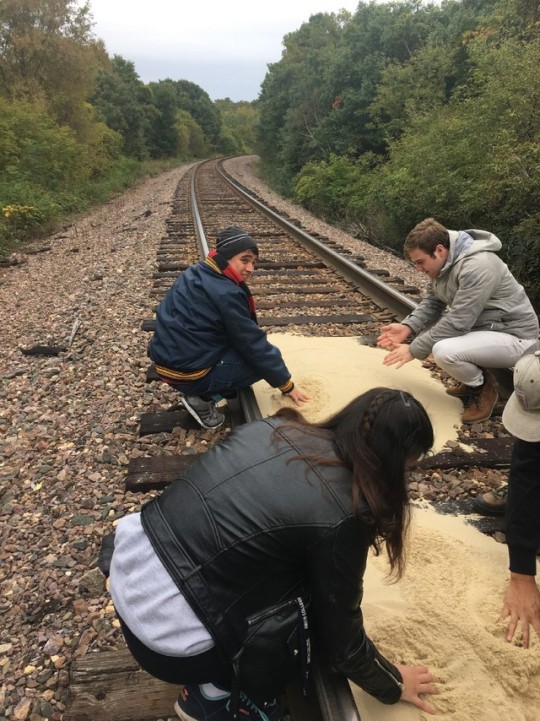
Process blog: https://medium.com/mississippi-an-anthropocene-river
Mississippi. An Anthropocene River explores the vast but patchy area of the Mississippi in its changing spatio-temporal formations. Its aim is to open up this landscape to a larger public and make it legible as a critical zone of habitation and long-term interaction between humans and the environment. From October 2018 to November 2019, several interdisciplinary groups of researchers, artists and stakeholders from civil society — organized into “Field Stations” — will investigate the river basin to develop local approaches to issues of global change and together will forge new methods of transdisciplinary research and education.
0 notes
